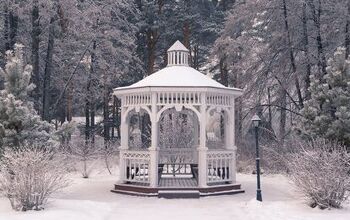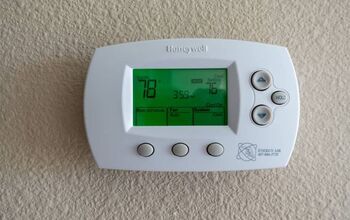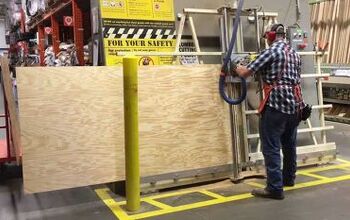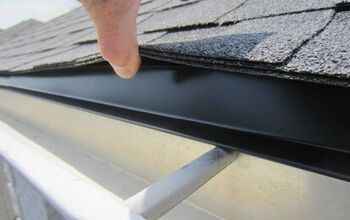11 Ways To Protect Vulnerable Plants From Summer Heat

Summers are getting warmer, and heat waves are more common in many regions around the world. While many plants can handle normal summer heat, the extreme temperatures that accompany a heat wave can stress, burn, and kill even your most resilient plants. If there’s a stretch of hot weather heading your way, you’ll want to know all the ways you can protect your plants from the heat.
When summer days are exceptionally hot, you should install a shade cloth or use umbrellas to provide vulnerable plants with shade. Water plants thoroughly in the morning, but don’t water the leaves, as this can cause mold growth. Add mulch to your garden to help your plants retain moisture. Choose plants that can handle high heat when you live somewhere with hot summers.
When temperatures reach dangerously high levels, you need to think about not only your well-being, but also your plants and their health. High temperatures can kill many plants, especially those that aren’t meant to endure extreme heat. Luckily, there are many ways to keep all your plants alive during stretches of summer heat. Before you select which methods are best for your garden, however, there are several factors you must consider.
Factors To Consider When Protecting Plants From Extreme Heat
1. One Hot Day Versus A Prolonged Heat Wave
One major factor to consider when you are trying to protect your plants from heat is the length of the heat wave. One day of extreme heat can be handled much easier than a week-long stretch of temperatures in the 90s.
When there is a heat warning in effect, ensure you take a deeper look. If the heat wave looks like it will last several days, then you should use several methods listed below to give your plants the best chance at surviving.
2. The Plant’s Desired Conditions
Some plants can handle heat better than others. If you live in a hot climate, then you likely plant more fruits, vegetables, and flowers that thrive in heat. However, if you live in a cooler climate that experiences occasional heat waves, then more of your plants are likely to shrivel and die if left unprotected in high heat.
3. The Plant’s Location In Your Garden
Where your plants are located within your garden will dictate how vulnerable they are during a heat wave. For example, plants in a shady area will be better protected than those in full sun.
Plants in low-lying areas with more moisture will also hold up better than those on hills where water disappears first.
4. Humidity Levels And Rain
It should come as no surprise that plants struggle more in hot, dry conditions than in hot and humid ones. Check the humidity levels as well as the temperatures when making a determination on how to protect your plants from heat.
5. Drainage And Soil Type
Lastly, remember that not all soil types retain water the same. If you live somewhere with sandy soil, water will drain very fast in the summer heat. Soils with clay or mulch are better at retaining water. The better your soil is at holding in water, the healthier and cooler your plants will be when a heat wave comes your way.
11 Ways To Protect Your Garden During Summer Heat Waves
1. Water Plants Early And Thoroughly
When temperatures reach dangerously high levels, your plants need water more than ever. For one, water evaporates faster in high heat than it does in cooler weather. This makes it essential to water more often. The best time to water your garden is in the morning.
Furthermore, when the weather is too hot for a plant, many plants undergo a cooling process called evapotranspiration, which is like plant sweating. In order to keep evapotranspiration going during a heat wave, your plant needs plenty of water near its roots. Any time temperatures soar, you should ensure you water diligently and check the moisture levels in your garden.
2. Avoid Pruning And Trimming During Heat Waves
Most perennial plants need trimming and pruning, but you should avoid this kind of work when the temperatures are very high. For one, it’s often dangerous for you to spend prolonged periods gardening outdoors in extreme heat.
Pruning and trimming plants in high heat can also cause unnecessary stress on the plant. It can force a plant into shock, and it increases the risk that the plant will shrivel and die. Save pruning and trimming for milder, cooler weather.
3. Install A Shade Cloth
Many plants become dry and even experience leaf burn in extreme heat, especially when the sun is strong. To avoid drying out your plants, you should install a shade cloth, especially in gardens with full sun.
You can use just about any lightweight fabric to create a shade cloth. You can purchase traditional shade cloths, use burlap, an old sheet, or even a lightweight tarp. Use garden poles or tall wooden stakes to put the cloth in place. Once the temperatures return to normal, you can remove the cloth.
4. Plant Varieties That Can Handle High Temperatures
If you live somewhere that experiences periods of high heat every year, then you should consider planting species that can handle these conditions. When purchasing plants, choose ones that enjoy heat and full sun, or at least varieties that are resilient in these conditions. This will make it easier to keep them alive during a heat wave.
5. Use Umbrellas To Protect Plants
If you have a small garden or are trying to protect specific plants, then you can enlist the help of umbrellas. Personal umbrellas and larger table umbrellas are great at providing shade to specific plants. This is a fast and easy way to cool off specific plants in your garden.
6. Move Potted Plants Indoors Or Into The Shade
If there's a long heat wave coming your way, consider relocating your vulnerable potted plants. You can move container gardens and any potted plants to a shaded porch, or even bring some plants into your home.
This is an easy way to protect your most vulnerable plants during extreme heat. Potted plants tend to dry out faster as well, so ensure they are watered thoroughly during hot periods.
7. Plant Strategically
When you plan your garden, you should try to place species in areas based on their water and sun needs. If plants like partial shade, then try to find a spot that isn’t always in the sun. Furthermore, grouping plants based on their water needs will help keep them alive in times of extreme heat. It makes it easier to give your water-loving plants constant attention when extreme heat comes your way.
8. Add Mulch
Sprinkling a quality mulch over your soil is one of the best ways to keep your plants hydrated and cool on the hottest days of the summer. Mulch can improve water retention up to 50%. This allows your plants to stay hydrated and cool, even when the high temperatures try to suck the moisture quickly out of the soil.
9. Keep Leaves Dry
When you water your plants in the summer heat, remember to water at the base of the plant, directly towards the roots. You might be tempted to water the leaves to cool the plant off, but this is usually a bad idea. Wet leaves can promote mold growth in high heat, especially if you live in a region with high humidity.
10. Avoid Heavy Fertilizing Until Weather Cools
Feeding and fertilizing your soil is essential to keep your plants thriving, but you shouldn’t do any heavy fertilizing in times of extreme heat. High temperatures can cause your fertilizers to release nutrients too quickly.
This can cause fertilizer burn, which can damage or even kill your plants. This is particularly true when the soil is high in nitrogen.
11. Plant Early In The Season
If you live somewhere that experiences summer heat waves, it’s crucial to plant all your vulnerable plants in the early spring when the risk of frost has diminished. Adding plants to the ground early gives them more time to establish and grow. The more established your plants are, the stronger they are. This makes it easier for them to survive a heat wave.
Summing Up Protecting Vulnerable Plants From Summer Heat
Plants need sun, but too much extreme sun and heat can have detrimental effects on all sorts of plants. To protect your most vulnerable plants from heat, you should cover them with a shade cloth and ensure they are watered thoroughly in the morning. Move potted plants to the shade or indoors, and use mulch to help keep the soil cool and moist. Choose plants that can withstand high temperatures, and plant vulnerable plants in the early spring so, they have time to establish and grow strong.
Related Guides:
- Smarter Irrigation For Raised Garden Beds
- Tips To Make It Easier To Water Your Garden In The Summer Heat
- How To Conserve Water In The Garden

Tom Gaffey is an expert writer who currently resides in Washington D.C. Tom has a passion for real estate and home improvement writing, as well as travel and lifestyle writing. He lived the last twelve years in Hawaii where he worked closely with luxury resorts and event planners, mastering his knowledge of aesthetics and luxury products. This is where he found his passion for home improvement and a keen interest in DIY projects. Currently, Tom resides in Washington D.C, and also working on his debut fiction novel.
More by Tom Gaffey











![The 5 Best Angle Grinders – [2022 Reviews & Buyer's Guide]](https://cdn-fastly.upgradedhome.com/media/2023/07/31/9071326/the-5-best-angle-grinders-2022-reviews-buyer-s-guide.jpg?size=350x220)
![10 Best Scroll Saws for 2022 [Ultimate Reviews & Buyer's Guide]](https://cdn-fastly.upgradedhome.com/media/2023/07/31/9070684/10-best-scroll-saws-for-2022-ultimate-reviews-buyer-s-guide.jpg?size=350x220)














